Explore Beijing - China Travel, Asia
Welcome to Beijing, the center, the heart and soul of China. As the country's capital, Beijing is a bustling metropolis that seamlessly blends its ancient heritage with modern innovation. This city, rich in history and culture, stands as a testament to China's storied past and bright future. Whether you're walking through its historic alleys or marveling at its futuristic skyline, Beijing offers an unforgettable experience for every traveler.
Population: Approximately 21.5 million in 2018.
Economy: Capital city of China and ranks the tenth largest metropolitan economies in the world.
Landmarks: Famous for The Great Wall of China, The Forbidden City, and Beijing Olympic Park.
China
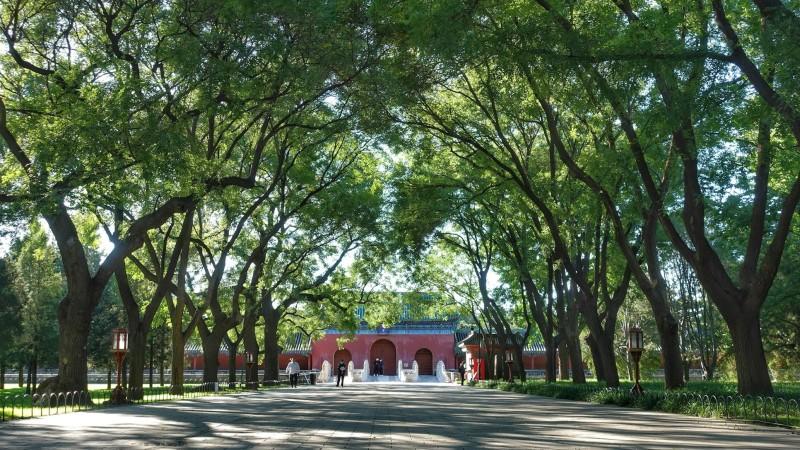
Overview of Beijing
History & Culture Influence
Beijing's history stretches back over three millennia, making it one of the world's oldest cities. It served as the capital of various dynasties, notably the Ming and Qing, and was essential in developing Chinese culture. Beijing's cultural diversity is woven with threads of Confucianism, Buddhism, and Taoism. These philosophies have deeply influenced the city's art, architecture, and way of life. Discover the ancient wisdom and traditions that continue to thrive in Beijing's temples, gardens, and daily practices.
Interaction with The Locals
The city is a major political center and a hub for education and research, making public administration, scientific research and academic areas a significant source of employment. The service industry is another major employer, driven by tourism, hospitality, retail, and finance. With Beijing's rich cultural heritage and numerous attractions, many locals work in roles related to tourism, such as tour guides, hotel staff, and restaurant workers. Locals are often eager to share their rich cultural heritage with visitors, whether through casual conversations, traditional tea ceremonies, or guided tours of historical sites. This openness and willingness to help make navigating the city and experiencing its many attractions a pleasant and enriching experience.
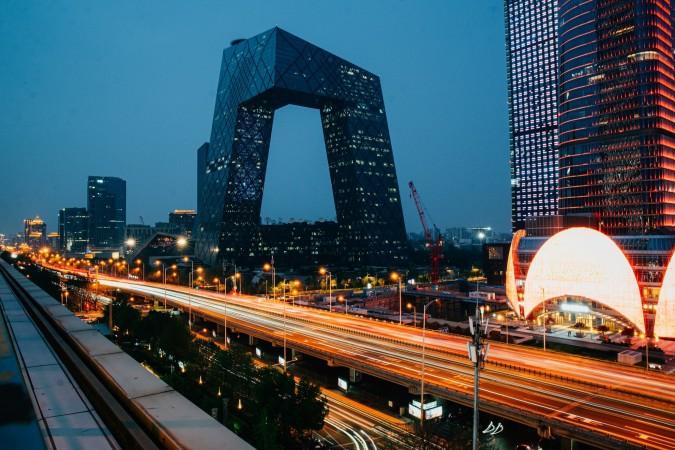
Modern Beijing - © Christian Lue
Top Attractions in Beijing
Beijing is a city steeped in history, culture, and modernity, offering a wealth of attractions that cater to diverse interests. These top attractions below offer a glimpse into Beijing's past, present, and future, showcasing its cultural heritage, architectural wonders, and modern achievements.
- The Great Wall of China: The Great Wall, which spans over 13,000 kilometers, is an architectural wonder and a UNESCO World Heritage Site. Explore sections like Mutianyu, Jinshanling, or Badaling for stunning views and a glimpse into China's ancient past.
- The Forbidden City (Palace Museum): Located in the heart of Beijing, this imperial palace complex served as the residence of Chinese emperors for nearly 500 years. Wander around its beautiful halls, courtyards, and gardens to appreciate the grandeur and historical significance.
- Tiananmen Square: One of the largest public squares in the world, Tiananmen Square is surrounded by significant landmarks such as the Monument to the People's Heroes, the Great Hall of the People, and the National Museum of China. It's a symbolic center of Chinese politics and history.
- Temple of Heaven: The Temple of Heaven, a marvel of Ming Dynasty architecture, was where monarchs performed rites to ensure abundant harvests and nation-wide benefits. Stroll through its expansive gardens and marvel at the Hall of Prayer for Good Harvests, an iconic symbol of Chinese spirituality.
- Beijing Olympic Park: Built for the 2008 Summer Olympics, this modern complex includes iconic structures like the Bird's Nest stadium (National Stadium) and the Water Cube (National Aquatics Center). Visitors are welcome to see the facilities and relive the excitement of the games.
- Lama Temple (Yonghe Temple): One of the largest and most important Tibetan Buddhist monasteries outside of Tibet, the Lama Temple houses a giant Buddha statue carved from a single sandalwood tree. Experience the tranquility of its halls and courtyards adorned with intricate carvings and colorful prayer flags.
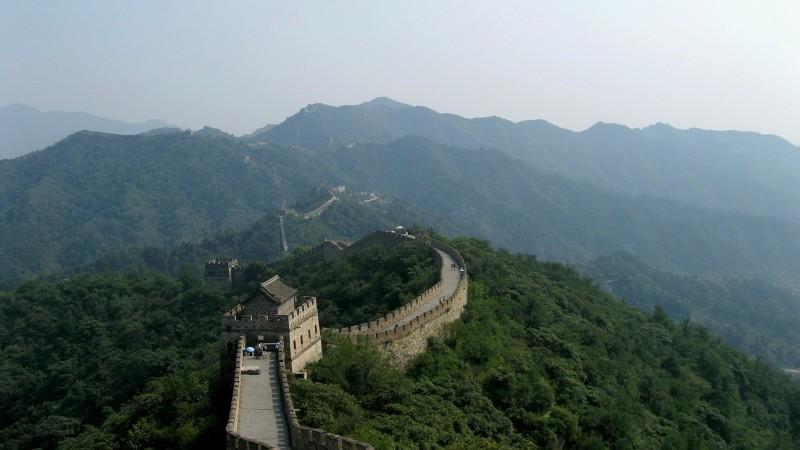
The Great Wall of China - © Hongbin
Must-Try Dishes in Beijing
Beijing's food scene is a delicious combination of tastes that represents the city's diverse ethnic background. Here are some must-try dishes that encapsulate the essence of Beijing cuisine:
- Peking Duck: Renowned worldwide, Peking Duck is Beijing's most famous dish. Prepared through a meticulous process that results in crispy skin and tender meat, it's often served with thin pancakes, scallions, and hoisin sauce. Visit well-known places like Quanjude or Da Dong for a truly genuine experience.
- Jiaozi (Dumplings): These savory dumplings are a staple in Beijing's cuisine, enjoyed year-round but especially during festivals like Chinese New Year. Filled with various combinations of minced meat, vegetables, and sometimes seafood, they are typically served steamed or pan-fried.
- Zhajiangmian (Noodles with Soybean Paste): A beloved comfort food, Zhajiangmian features hand-pulled noodles topped with a savory soybean paste sauce, minced pork or beef, and fresh vegetables. It's hearty, flavorful, and popular among locals and visitors alike.
- Hot Pot: Although traditionally from Sichuan, hot pot is immensely popular in Beijing. It involves cooking a variety of meats, vegetables, and noodles in a simmering broth at your table. Dip your cooked food in various dipping sauces for a flavorful experience.
- Chaoyang Noodles: Named after Beijing's Chaoyang District, this dish features hand-pulled noodles served in a rich beef or lamb broth, often topped with tender slices of meat and fresh herbs.
- Dongpo Pork: A dish from Hangzhou that has become popular in Beijing, Dongpo Pork consists of braised pork belly cooked in soy sauce and wine until it melts-in-your-mouth tender.
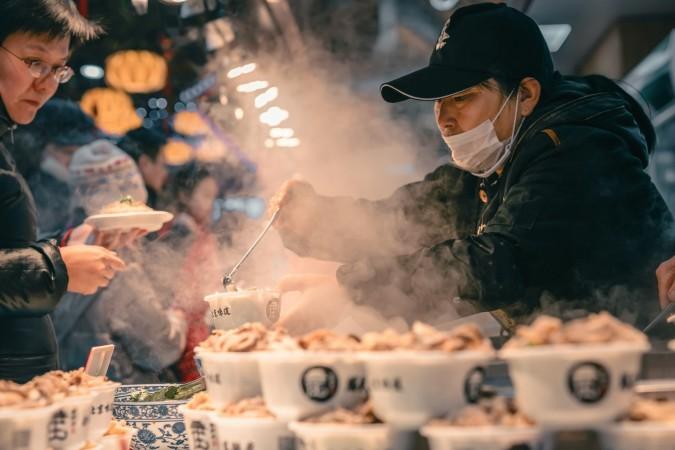
A Noodle Vendor in Beijing - © zhang kaiyv
Festivals & Local Celebrations
Beijing's calendar is rich with vibrant festivals and celebrations that offer insights into its cultural tapestry. These festivals offer a glimpse into Beijing's cultural heritage, providing opportunities to participate in traditional rituals and festivities alongside locals.
Chinese New Year
Celebrated with great fervor, Chinese New Year (Spring Festival) marks the beginning of the lunar new year. Enjoy colorful dragon dances, fireworks, and traditional meals with family and friends.
Mid-Autumn Festival
Also known as the Moon Festival, this celebration revolves around family reunions and the consumption of mooncakes. These sweet pastries symbolize unity and togetherness under the full moon.
Dragon Boat Festival
Held annually to commemorate the ancient poet Qu Yuan, this festival features dragon boat races on Beijing's lakes and rivers. Enjoy watching the colorful boats and savoring zongzi, pyramid-shaped rice dumplings wrapped in bamboo leaves.
Beijing Music Festival
Dedicated to classical music, this festival features performances by renowned orchestras, conductors, and soloists. It takes place at various venues across the city, including the iconic National Centre for the Performing Arts.
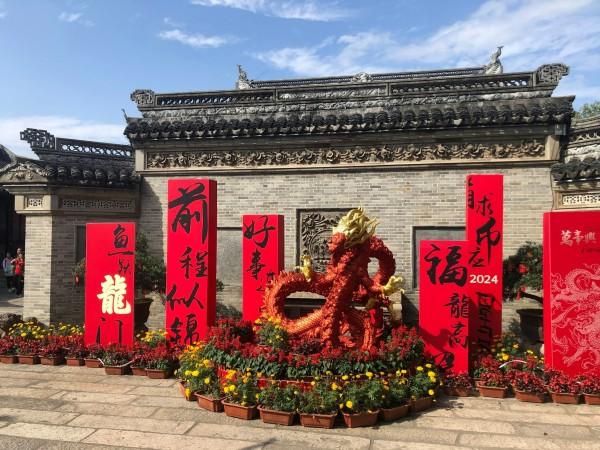
Celebration of Chinese New Year - © Kaitlyn C
What to Do in Beijing
From cultural immersions to modern marvels, Beijing offers a wealth of activities that promise to captivate and inspire travelers from around the globe.
- Explore Hutongs: Wander through Beijing's narrow alleyways and traditional courtyard homes known as Hutongs. These historic neighborhoods offer a glimpse into the city's past and are best explored on foot or by bicycle.
- Traditional Tea Ceremonies: Engage in a traditional tea ceremony at a local tea house, where you can learn about Chinese tea culture and taste a variety of teas. It's a serene experience that provides insight into the art of tea preparation and appreciation.
- Modern Attractions: Visit Beijing Olympic Park, home to the iconic Bird's Nest stadium and Water Cube. Explore the futuristic 798 Art District, a hub of contemporary art galleries, cafes, and boutiques housed in former factories.
- Great Wall Hiking: Escape the city and embark on a trek along the Great Wall of China. Sections like Jinshanling or Simatai offer breathtaking views and a chance to immerse yourself in ancient history while enjoying scenic landscapes.
- Chinese Opera Performance: Attend a traditional Beijing opera performance, known for its elaborate costumes, stylized singing, and martial arts. The Liyuan Theatre and Huguang Guild Hall are popular venues where you can witness this ancient art form.
- Peking Opera Mask Painting: Participate in a hands-on workshop to paint your own Peking opera mask, each color and design symbolizing different character traits and emotions portrayed in the opera. It's a creative way to delve deeper into traditional Chinese performing arts.
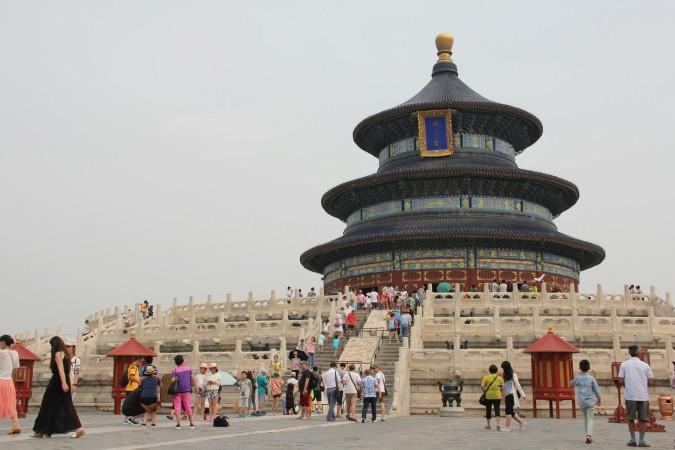
Tourists visit the Temple of Heaven in Beijing - © Kevin Engelke
Shopping in Beijing
Shopping in Beijing not only allows you to find unique souvenirs and gifts but also offers insight into Chinese culture and craftsmanship. Beijing's diverse shopping experiences cater to every interest and budget, ensuring a memorable shopping adventure in the heart of China's capital city.
- Wangfujing Street: One of Beijing's most famous shopping streets, Wangfujing offers a mix of upscale department stores, boutiques, and international brands. Explore the historic Wangfujing Snack Street for local delicacies and souvenirs.
- Silk Street (Xiushui Street): Known for its vast selection of silk products, clothing, jewelry, and souvenirs, Silk Street is a must-visit for bargain hunters. Negotiating prices is common here, adding to the shopping experience.
- Panjiayuan Antique Market: A paradise for antique lovers and collectors seeking unique souvenirs and gifts, Panjiayuan Market features a wide array of artifacts, traditional crafts, paintings, and calligraphy.
- Liulichang Street: Famous for its traditional Chinese arts and crafts, Liulichang Street is lined with antique shops, art stores, and bookshops. Discover ancient Chinese paintings, calligraphy, ceramics, and exquisite handicrafts.
- Qianmen Street: A historic pedestrian street near Tiananmen Square, Qianmen offers a blend of old and new Beijing. Explore its boutiques, traditional Chinese medicine shops, and souvenir stalls housed in restored Qing Dynasty buildings.
- 798 Art District: Beyond its galleries and studios, 798 Art District offers unique shopping experiences with avant-garde fashion boutiques, design shops, and quirky stores selling art-inspired items and souvenirs.
- Yashow Market: A popular market among young shoppers and expatriates, Yashow Market specializes in clothing, accessories, and electronics. Bargaining is expected, so hone your negotiation skills for the best deals.
- Malls and Shopping Centers: Beijing boasts modern shopping centers like the Beijing apm, The Place, and China World Mall, offering international fashion brands, gourmet dining, and entertainment options under one roof.
- Hutong Shopping: Explore Beijing's hutongs (narrow alleys) for unique shopping experiences, from small boutiques selling handmade crafts to local markets offering fresh produce and household items.
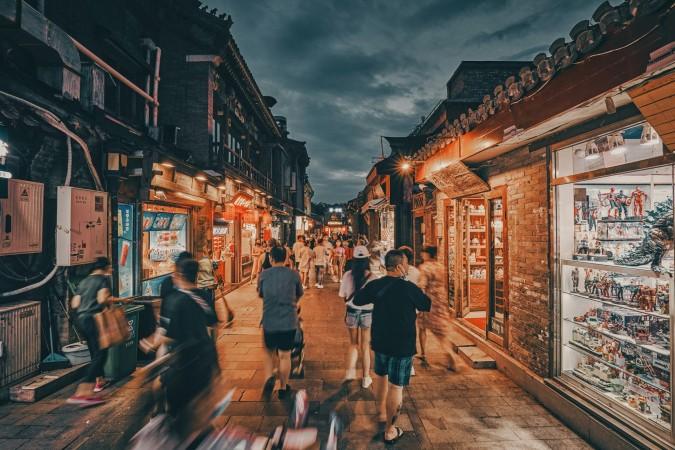
Beijing's market- © zhang kaiyv
Weather in Beijing: Best Time to Visit
Spring in Beijing
- Weather: Spring brings moderate temperatures and occasional rainfall to Beijing. Average temperatures range from 3°C (37°F) to 26°C (79°F), with March and April being cooler compared to May. The city blooms with cherry blossoms and other spring flowers, creating a picturesque backdrop.
- Tourism Trends: Spring marks the beginning of peak tourist season in Beijing. Cultural and historical tourism flourishes, with visitors exploring ancient sites and participating in traditional activities. Outdoor activities such as hiking, cycling, and enjoying local parks become popular as the weather warms up.
Summer in Beijing
- Weather: Summer in Beijing is characterized by hot and humid weather, with average temperatures ranging from 24°C (75°F) to 30°C (86°F). July is often the warmest month, with temperatures occasionally topping 30°C (86°F). While rainfall is less frequent, humidity levels can make the heat feel more intense.
- Tourism Trends: Despite the heat, summer attracts a large number of tourists, especially families and international travelers. This season is great for seeing outdoor sights and exploring historical sites and attending traditional performances. The peak season sees bustling streets, vibrant night markets, and a variety of cultural events, enhancing the overall tourist experience.
Autumn in Beijing
- Weather: Autumn brings mild temperatures and clear skies to Beijing. Temperatures range from 10°C (50°F) to 22°C (72°F) in September and October, gradually cooling down in November (1°C to 12°C or 34°F to 54°F). The air quality dramatically improves, providing clean air and breathtaking vistas of colorful foliage.
- Tourism Trends: This is considered the best time to visit Beijing by many travelers due to the comfortable weather and beautiful scenery. Outdoor activities such as hiking the Great Wall and enjoying autumn festivals attract both domestic and international tourists. The city hosts cultural events and art exhibitions, adding to the appeal of autumn travel in Beijing.
Winter in Beijing
- Weather: Winter in Beijing is cold and dry, with average temperatures ranging from -4°C (25°F) to 6°C (43°F). December and January are the coldest months, often experiencing temperatures below freezing at night.
- Tourism Trends: Winter tourism in Beijing has been growing, especially after hosting the 2022 Winter Olympics. Ski resorts near Beijing, such as Nanshan and Badaling, attract winter sports enthusiasts. The city's cultural sites are less crowded, allowing visitors to explore attractions like the Forbidden City and traditional hutongs at a more leisurely pace.
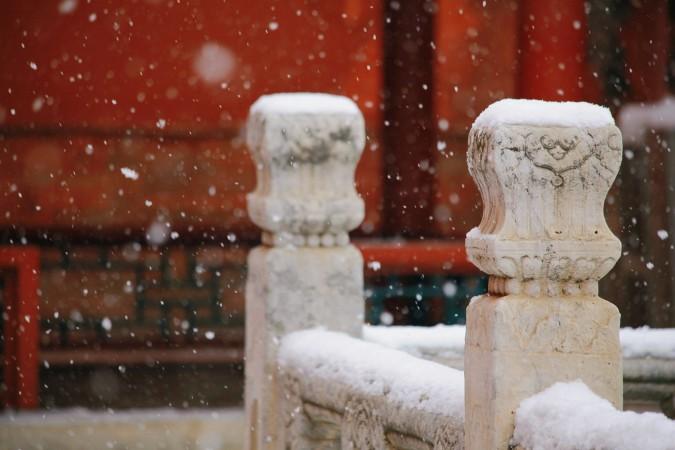
Winter in the Forbidden City - © Wang xiaoqi
Culture Etiquette in Beijing
Respecting Beijing's cultural customs enhances your interaction with locals and enriches your travel experience
- Greetings: Greet others with a nod or handshake. Use titles and last names when addressing people unless invited to use their first names.
- Dining Etiquette: When dining with locals, wait for the host to begin eating before starting your meal. Use chopsticks properly and avoid pointing them directly at others or leaving them sticking upright in a bowl.
- Visiting Temples: Dress modestly and respectfully when visiting temples or religious sites. Follow local conventions, such as removing your shoes before entering specific locations.
- Gift Giving: When presenting gifts, wrap them neatly and offer them with both hands. Small souvenirs from your home country are appreciated.
- Public Behavior: Avoid loud conversations or public displays of affection, as they may be considered inappropriate in certain settings. Respect queues and wait your turn in line.
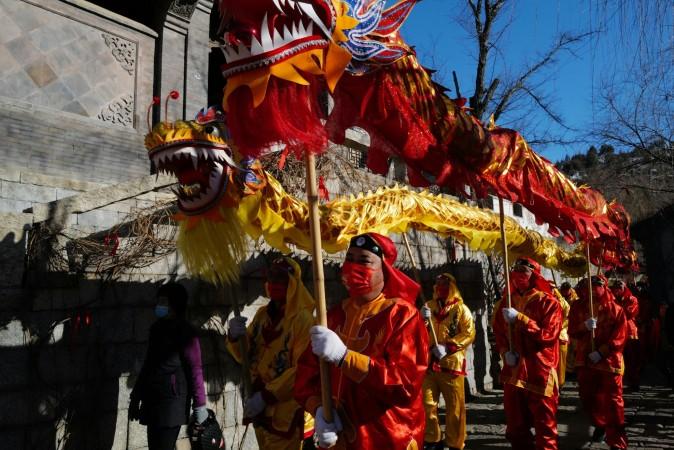
Spring Festival celebration in Beijing - © Gigi Zhang
Essential Travel Information
Getting Around Beijing
Travelers in Beijing have a choice of transit alternatives to help them explore the city smoothly. The subway system is extensive, with signage in Chinese and English, covering major tourist spots, business districts, and residential areas. While affordable, buses can be crowded during peak times so taxis are more dependable means of transportation. Additionally, rideshare services offer competitive rates and convenience similar to taxis, enhancing transportation choices for exploring Beijing's diverse neighborhoods and attractions.
ATM & Banking Services
In Beijing, ATMs are widely accessible, accepting major international credit and debit cards like Visa, MasterCard, and UnionPay, with instructions available in both English and Chinese. Currency exchange services are readily available at airports, major hotels, and various banks throughout the city. Banking services in Beijing typically operate Monday through Friday, from 9 AM to 5 PM, with some branches in commercial areas possibly open on weekends for added convenience.
Where to Stay in Beijing
In Beijing, travelers have a diverse range of accommodation options to choose from. Luxury hotels, boutique hotels, and budget-friendly hostels cater to different preferences and budgets. Budget-conscious travelers can opt for hostels and guesthouses scattered across the city. For longer stays or families, serviced apartments in Beijing offer the comforts of home with amenities such as kitchens, living areas, and laundry services, combined with the convenience of hotel-like services.
Articles for you

Explore Yala National Park - Sri Lanka Travel, Asia
Tucked away in Sri Lanka’s southeastern corner, Yala National Park is where wild nature meets deep tradition. Known worldwide for its leopard population, the park is also home to elephants, sloth bears, crocodiles, and hundreds of bird species. Beyond wildlife, Yala opens doors to a cultural landscape dotted with ancient temples, Buddhist ruins, and coastal villages. For travelers seeking more than just a safari, Yala offers a chance to explore eco-tourism, local communities, and sacred heritage sites.
Population: The Yala National Park area doesn’t have a human population.
Economy: The economy around Yala National Park thrives on a blend of eco-tourism, agriculture, and local services. Safari tours, eco-lodges, and cultural experiences drive steady income for nearby towns like Tissamaharama and Kataragama, supporting thousands of families.
Landmarks: Famous for Block I of Yala and wildlife encounters, including elephants, sloth bears, crocodiles, and exotic bird species.

Explore Galle - Sri Lanka Travel, Asia
Nestled on Sri Lanka’s southern coastline, Galle is a vibrant city where history meets the sea. Its cobbled streets, colonial architecture, and serene beaches make it a must-visit destination for travelers seeking a blend of culture, adventure, and relaxation. A UNESCO World Heritage site, Galle captivates visitors with its Dutch Fort, bustling markets, and friendly locals. Whether you’re exploring the ramparts at sunset or savoring fresh seafood by the shore, Galle promises an unforgettable journey into Sri Lanka’s heritage.
Population: Approximately 113,000 in 2023.
Economy: Galle’s economy thrives on tourism, trade, and fisheries. The city’s historic fort, colonial architecture, and coastal charm draw thousands of international visitors each year, making tourism its main economic driver. Fishing remains vital for local livelihoods, supplying fresh seafood across the region.
Landmarks: Famous for the Galle Fort, Dutch Reformed Church & Maritime Museum, and Unawatuna Beach.

Explore Bentota - Sri Lanka Travel, Asia
Nestled along Sri Lanka’s southwestern coast, Bentota is a tropical paradise that blends golden beaches, vibrant culture, and thrilling adventures. Famous for its calm waters, luxury resorts, and scenic river estuary, Bentota has become a top destination for travelers seeking both relaxation and authentic experiences. From serene beach walks at sunrise to adrenaline-pumping water sports, this coastal town offers a perfect balance of leisure and exploration. With its proximity to Colombo and Galle, Bentota is easy to reach, making it an ideal stop for both short escapes and extended holidays.
Population: Approximately 37,000 in 2023.
Economy: Bentota’s economy thrives mainly on tourism, which drives local businesses such as hotels, restaurants, and wellness retreats. The town also benefits from fishing, coconut cultivation, and handicrafts like wood carving and batik textiles. Many residents rely on the growing demand for water sports and Ayurvedic treatments, making tourism the backbone of both income and employment in the area.
Landmarks: Famous for Bentota Beach, Bentota River Safari, and Kande Vihara Temple.

Explore Mirissa - Sri Lanka Travel, Asia
Mirissa is a charming coastal town on Sri Lanka’s southern shoreline. Known for its golden beaches, turquoise waters, and vibrant marine life, it has become a must-visit stop for travelers exploring the island. Many come for whale watching, surfing, and sunset views at Coconut Tree Hill, but Mirissa offers much more than postcard beauty. The fishing boats you see anchored by the bay carry generations of stories. Local traditions, delicious cuisine, and a laid-back rhythm of life shape every visitor’s experience.
Population: Approximately 4,700 in 2023.
Economy: Mirissa’s economy is largely shaped by its coastal location. Fishing has long been the backbone of local livelihoods, with generations relying on the Indian Ocean for income. In recent decades, tourism has become the main driver of growth, thanks to whale watching, surfing, and beachside hospitality.
Landmarks: Famous for Mirissa Beach, Coconut Tree Hill, and Parrot Rock Bridge.

Explore Nuwara Eliya - Sri Lanka Travel, Asia
Tucked away in the Central Highlands of Sri Lanka, Nuwara Eliya is often called “Little England”. With its rolling tea plantations, cool misty mornings, and colonial charm, this mountain town feels like a step into another world. Travelers come here to breathe fresh air, walk through flower gardens, sip the finest Ceylon Tea, and enjoy a pace of life far from the island’s busy cities. Whether you’re drawn by scenic landscapes, heritage architecture, or the warmth of its people, Nuwara Eliya is a destination that blends nature, culture, and history in perfect harmony.
Population: Approximately 781,000 in 2023.
Economy: Nuwara Eliya’s economy thrives mainly on tea production, as it sits in the heart of Sri Lanka’s central highlands, famous worldwide for Ceylon Tea. The city also benefits from a growing tourism industry, attracting visitors with its colonial charm, cool climate, and scenic landscapes.
Landmarks: Famous for Gregory Lake, Hakgala Botanical Garden, and Victoria Park.

Explore Sukau - Malaysia Travel, Asia
Nestled on the banks of the Kinabatangan River in Sabah, Malaysian Borneo, Sukau is a destination where wildlife, culture, and conservation come together. Known as one of Asia’s top spots for river safaris and eco-tourism, this quiet village offers a front-row seat to encounters with Bornean orangutans, pygmy elephants, proboscis monkeys, and exotic birdlife.
Population: Approximately 1,400 in 2019.
Economy: Sukau’s economy is shaped by its riverine location and natural resources. Traditionally, the Orang Sungai community relied on fishing, small-scale farming, and forest gathering for their livelihood. Today, the village has shifted toward eco-tourism, with river cruises, jungle trekking, and homestays providing income.
Landmarks: Famous for the Kinabatangan River cruises, Gomantong Caves, and Ox-bow lakes and wetlands.
